This image is a summary of the main features of the plasmasphere: the plasmapause, main body of the plasmasphere, dusk-bulge region and detached plasma regions outside the main body of the plasmasphere
Click on image for full size
The Earth's Plasmasphere
The plasmasphere is a donut-shaped region inside the Earth's magnetosphere. It is basically an extension of
the ionosphere, or the topmost part of the Earth's atmosphere. The magnetic field lines of the Earth capture plasma that flows up from the ionosphere, so that there is a plasma build-up. Scientists call that
plasma build-up the plasmasphere.
The plasmasphere is composed mostly of hydrogen ions. The base of the plasmasphere, which is the same as the top of the ionosphere, is about 1000 kilometers from the Earth's surface. The temperature in the plasmasphere is generally between 6000K and 35,100K or VERY hot compared to temperatures we are used to!
The plasmasphere has a very sharp edge called the plasmapause. The plasmapause was discovered in 1963.
You might also be interested in:

Plasma is known as the fourth state of matter. The other three states are solid, liquid and gas.In most cases, matter on Earth has electrons that orbit around the atom's nucleus. The negatively charged
...more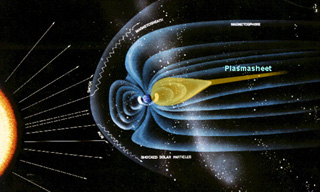
The plasma sheet is just that, a sheet of plasma that extends down the magnetotail dividing the two lobes of the Earth's magnetic field. This outer plasma is hotter than the plasma in the plasmasphere,
...more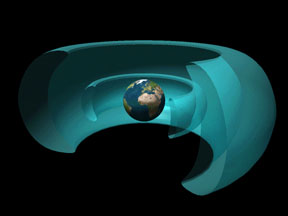
The Earth's radiation belts are just one part of the system called the magnetosphere. The radiation belts of the Earth are made up of electrons, protons and heavier atomic ions. These particles get trapped
...more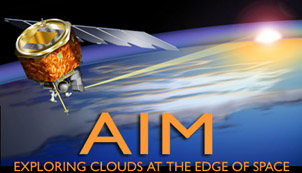
Satellites that orbit Earth help us study Earth's atmosphere, weather, and climate. Here are a few of the many spacecraft that study our atmosphere. Aura was launched in July 2004. It is studying pollution,
...more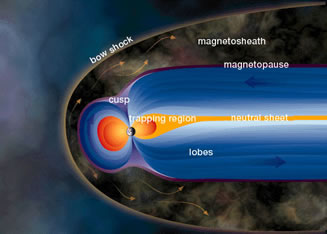
A magnetosphere has many parts, such as the bow shock, magnetosheath, magnetotail, plasmasheet, lobes, plasmasphere, radiation belts and many electric currents. It is composed of charged particles and
...more
AU stands for Astronomical Units. It is a useful way to measure the distances in interplanetary space. It is the distance between the Earth and the Sun, which is about 93 million miles. For reference,
...more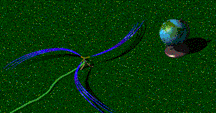
The solar wind is formed as the Sun's top layer blows off into space, carrying magnetic fields still attached to the Sun. Gusts form in the solar wind associated with violent events on the Sun. Particles
...more















